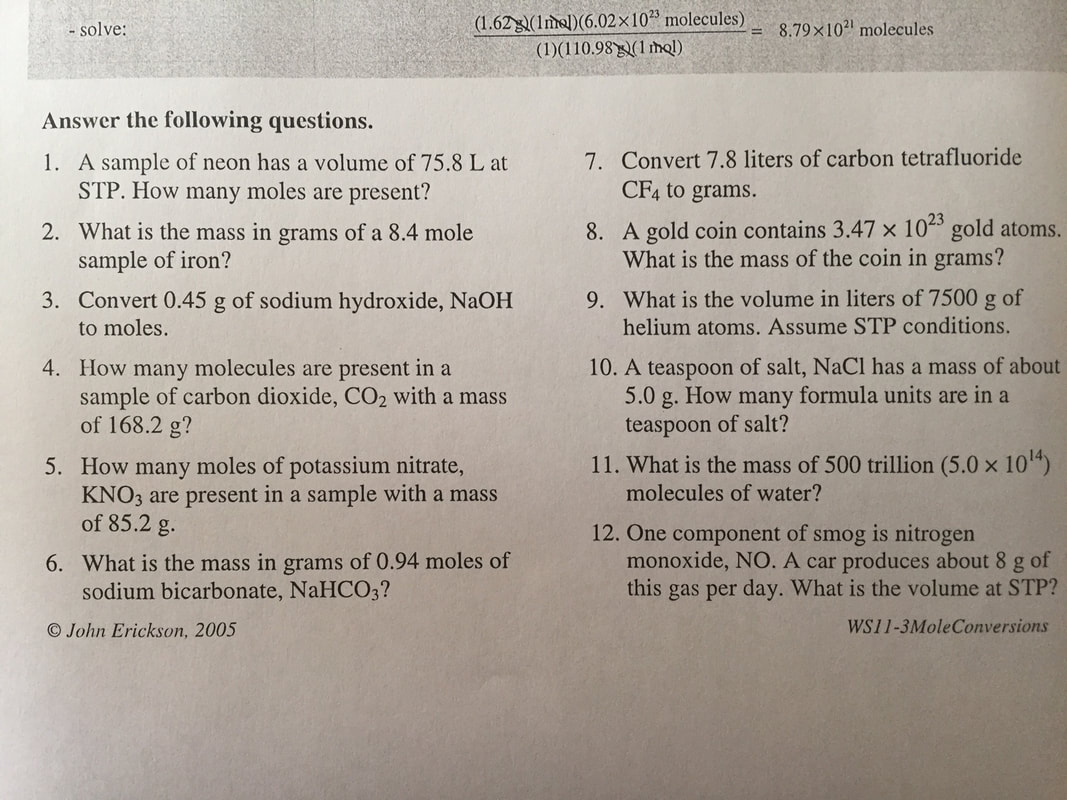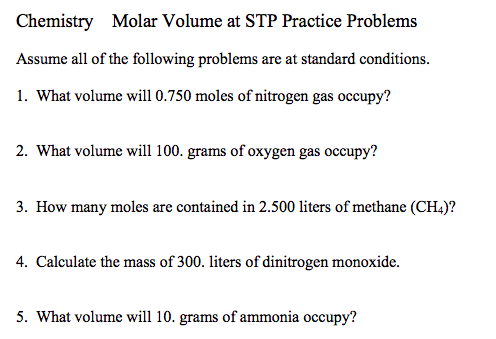Four points each. Each problem requires a balanced chemical equation. Be sure your answers include appropriate units and keep up with your sig figs.
______________________________________________________________
1. When propane is burned in oxygen, carbon dioxide and water are the products. If 1.55 moles of propane are burned, how many moles of water are produced? How many moles of carbon dioxide are produced?
2. Carbon dioxide gas is removed from spacecrafts by reacting with lithium hydroxide. Lithium carbonate and water are the products. How many moles of lithium hydroxide would be required to maintain one astronaut for five days if she exhales 22.5 moles of carbon dioxide per day?
3. Potassium chlorate (KClO3) breaks down into potassium chloride and oxygen gas. How much oxygen gas (in grams) is produced from 8.45 moles of potassium chlorate? How much potassium chloride (in grams) are produced?
4. How many moles of magnesium sulfate (MgSO4) are needed to react with 0.35 moles of sodium hydroxide (NaOH) to form magnesium hydroxide and sodium sulfate? How much magnesium hydroxide (in grams) is produced?
5. Calculate the mass of chlorine gas produced when 100 grams of sodium chloride decomposes. How much sodium (in grams) is produced from this amount of sodium chloride?
6. Calcium carbonate decomposes into calcium oxide and carbon dioxide. Determine the mass of calcium oxide AND carbon dioxide produced if 326 g of calcium carbonate is heated.
______________________________________________________________
1. When propane is burned in oxygen, carbon dioxide and water are the products. If 1.55 moles of propane are burned, how many moles of water are produced? How many moles of carbon dioxide are produced?
2. Carbon dioxide gas is removed from spacecrafts by reacting with lithium hydroxide. Lithium carbonate and water are the products. How many moles of lithium hydroxide would be required to maintain one astronaut for five days if she exhales 22.5 moles of carbon dioxide per day?
3. Potassium chlorate (KClO3) breaks down into potassium chloride and oxygen gas. How much oxygen gas (in grams) is produced from 8.45 moles of potassium chlorate? How much potassium chloride (in grams) are produced?
4. How many moles of magnesium sulfate (MgSO4) are needed to react with 0.35 moles of sodium hydroxide (NaOH) to form magnesium hydroxide and sodium sulfate? How much magnesium hydroxide (in grams) is produced?
5. Calculate the mass of chlorine gas produced when 100 grams of sodium chloride decomposes. How much sodium (in grams) is produced from this amount of sodium chloride?
6. Calcium carbonate decomposes into calcium oxide and carbon dioxide. Determine the mass of calcium oxide AND carbon dioxide produced if 326 g of calcium carbonate is heated.


 RSS Feed
RSS Feed